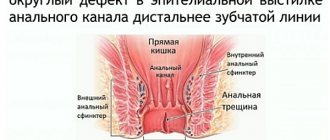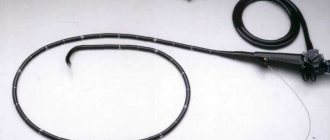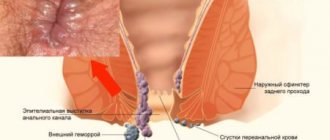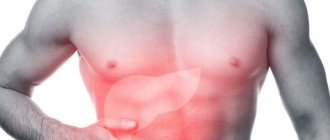The appearance of an anal fissure can cause discomfort and severe pain. Special ointments are often used to treat them. At the same time, to make the right choice, it is important to know what properties they have. This way, the healing of the rectum will take place most effectively and quickly. The appearance of anal fissures is quite a serious problem. It can cause severe pain. In addition, if there is no proper and timely treatment, then soon the disease of the anus may develop complications in the form of chronic constipation.
Features of anal fissures
Ointment for fissures in the anus helps patients who complain of pain, burning and itching in the anus. They almost always assume that the illness that besets them is hemorrhoids. However, despite the similarity of symptoms, hemorrhoids and anal fissure are two completely different diseases that require different treatments. As a result, having made a diagnosis on his own, the patient begins therapy, which may, at best, turn out to be ineffective, and at worst, aggravate the already serious condition of the anal intestinal mucosa.
Therefore, the best solution would be to immediately consult a specialist and follow his recommendations. From the moment you suspect that the cause of discomfort in the anal-rectal area is cracks, you can start using ointment for cracks in the anus. There are 3 most common symptoms of fissures in the anus:
- The degree of pain - the stronger the discomfort, the deeper the crack. At first, the pain appears only during bowel movements, and after a while it becomes regular.
- Itching - at first it bothers only occasionally, but over time it becomes a constant phenomenon.
- Blood from the anus - can be observed during bowel movements or with strong straining.
Anal fissures are the most common disease in proctology. It is diagnosed in almost every third patient. There is an opinion that hemorrhoids and anal fissures are the same disease. However, their similarities are rather superficial. Hemorrhoids are usually swollen veins, while anal fissures are small (up to 2 cm) ulcers or tears in the lining of the rectum. But these seemingly small scratches can have a very negative impact not only on the physical, but also on the psychological well-being of the patient.
Causes of rectal fissure
Most often, it is not possible to establish the exact cause of a rectal fissure. It is believed that the development of the disease can lead to:
- disturbances of blood flow in the walls of the anus (in people with heart and vascular diseases, in those who have to sit or stand in a monotonous position for a long time);
- prolonged constipation or diarrhea;
- inflammation of the mucous membrane of the rectum and anus;
- injuries to the mucous membrane (including during anal sex, medical procedures);
- diseases of the digestive system: gastritis, colitis, cholecystitis;
- eating large amounts of spicy food and alcohol;
- heavy physical activity;
- woman's injuries during childbirth.
How to treat anal fissure?
If the cause of this problem is any disease, then its treatment is necessary, since it is impossible to cure anal fissures without eliminating the cause of their appearance. In addition, when starting treatment for anal fissure, you should be clearly aware that no remedy will be effective enough if the patient suffers from constipation. Hard feces will injure the anus, so it will be difficult to heal the wound, and new cracks may appear periodically. Therefore, all patients should follow the diet recommended for constipation.
The choice of method to combat such a disease in a particular case is determined by the proctologist after a preliminary examination, depending on the clinical manifestations and nature of the disease. Anal canal fissures are treated in the following ways:
- The medicinal method is the use of medications to achieve an analgesic effect and healing of the cracked passage. The course of treatment depends on the degree of the disease and is carried out by the patient independently at home.
- A minimally invasive method is laser removal of a crack in a hospital setting.
- The surgical method is also carried out in a hospital, removing it with a laser and sphincterotomy.
They start, of course, with the conservative. It may include the following activities:
- Taking warm baths 2-3 times a day for 10-20 minutes. Thanks to this procedure, the muscles of the anus relax.
- Treating the anal area with Vaseline.
- Prevention of constipation. To do this, you need to consume more fluids, fruits, vegetables, or, after consulting a doctor, take a laxative.
If these measures do not bring the desired effect or you need to get it faster, you can resort to the use of ointments and suppositories.
Complications
Every time you defecate, the wound comes into contact with feces, which contain a huge amount of bacteria. Pathogenic microorganisms settled on the crack aggravate inflammatory processes.
If left untreated, the consequences can be very different:
- Bleeding, which may cause anemia;
- The chronic form is a predisposing factor to the formation of tumors;
- Infection of the wound is fraught with the development of paraproctitis or sepsis;
- A prolonged inflammatory process is dangerous due to the formation of fistulas.
Ointments against cracks
Ointments are popular in the treatment of this pathology. Patients consider their use to be the most effective, since the relief and effect from their use appears quite quickly. They are especially effective at the very beginning of the development of the disease.
Ointments, both natural and synthetic, can be used for treatment. But natural ones, as a rule, have fewer contraindications, which is important for expectant mothers or nursing women.
The advantages of using ointments are as follows.
- The main advantage of the ointment as a drug for treating such a delicate problem is its convenience and ease of use. Usually it is enough to apply the ointment on a cotton pad and apply it to the sore spot or insert it into the anus using a special applicator.
- Since the drug has a local effect, it will not have a negative effect on the body.
- Ointments act quite quickly, eliminating pain, burning, swelling, and bleeding.
- Healing occurs very quickly.
General recommendations
After defecation, you should treat the anus and the area around the anus with cold water - this will help reduce pain and prepare the anus for the use of topical medications.
To facilitate the act of defecation, it is recommended to use enemas. The procedure is performed when there is a urge to defecate.
- Oil enema. To prepare the solution, you need to measure 150 ml of water and add 50 ml of oil;
- Water enema. In this case, boiled water is used, preferably with the addition of disinfectants.
What ointments are best to use?
All ointments for the treatment of anal fissures have a fatty or oily base, which makes them easy to use for their intended purpose. Also, they should not cause irritation of the mucous membranes.
A good ointment can act in two directions at once - heal wounds and eliminate inflammation. By the way, most ointments are effectively used for the treatment of hemorrhoids. Table. Popular preparations for combating cracks.
| Name | Action and application |
| This remedy is considered one of the best for solving such a delicate problem. The drug has a lanolin-vaseline base. Promotes vasodilation, accelerates tissue regeneration, stimulates blood circulation and relaxes the sphincter ring. It is recommended to use for 2-4 weeks up to 2-4 times a day. | |
| The ointment contains lidocaine, bismuth subgalate, titanium dioxide, bufexamac and other active ingredients. It dries the wound, relieves inflammation, stimulates regeneration and eliminates pain. Used 2 times a day, can be administered rectally. The course of use is 8-10 days. | |
| Helps tissues recover faster, strengthens the walls of blood vessels, stimulates metabolic processes. Use until healing no more than 2 times a day. | |
| Ointment based on glucocorticoid and anesthetic. It has an anti-inflammatory effect, eliminates itching and pain, stimulates cell regeneration. Available in a tube equipped with a special applicator that allows you to apply the ointment directly into the anus. You need to use the product for 1-2 weeks up to 4 times a day. | |
| A good antimicrobial agent based on methyluracil and chloramphenicol. Eliminates inflammation quickly enough and speeds up the healing process. Used a couple of times a day for 7-10 days. | |
| Ointments-creams based on pantothenic acid heal well, eliminate inflammation, and help the mucous membrane to quickly recover. |
In order to more clearly examine the mechanism and strength of action (pharmacodynamics), as well as the effect on the body (pharmacokinetics) of ointments for cracks in the anus, let’s take the drug “Proctosan” as a basis. This is an ointment for topical use against cracks in the anus, used to relieve inflammation and accelerate the healing of cracks in the anorectal area.
The active ingredient of the drug, bufexamac, has an anti-inflammatory effect, as it tends to slow down the process of prostaglandin combination. Among the components of the ointment there are also those that have a tightening and drying effect - titanium dioxide and bismuth subgallate. Both of these components contribute to the rapid healing of wounds. Lidocaine in the composition reduces pain. Pharmacokinetic studies of the drug have not yet been conducted.
Correct use of ointments
In order for the use of ointments to give the desired result, you need to use them correctly. Only then will the treatment be as fast as possible.
Step 1
. It is important to carefully study the instructions for the purchased product - it will give basic recommendations for its use, as well as a list of possible contraindications and side effects.
Step 2
. The product should first be applied in a small amount to the wrist and wait about 20 minutes. If no allergic reaction occurs, then it can also be used in the anal area.
Step 3
. The anal area must be cleaned before using the ointment. It is best to apply the anti-crack remedy after defecation. You can clean the anus with a weak solution of potassium permanganate or clean boiled water.
Step 4
. The ointment, depending on the recommendations and the course of the disease, can be applied to the anal area or injected directly into it.
Step 5
. You can apply the ointment with a cotton pad or a clean finger. Sometimes an applicator may be sold along with the tube containing the ointment. Do not rub the product in!
Step 6
. It is important to follow the recommendations for the duration of treatment and not use the drug for longer than recommended.
Step 7
. After applying the product, you need to lie down for 30 to 60 minutes. It is best to use medications before bedtime.
Step 8
. Some ointments can stain laundry. You can cover them with a cotton swab after application.
How to choose ointments for hemorrhoids
A coloproctologist will help you choose an effective ointment for hemorrhoids. A timely visit to a specialist will help you get rid of discomfort and pain as quickly as possible thanks to correctly selected treatment tactics. Ointments for external and rectal use are often prescribed together with oral medications (tablets and capsules). Self-medication can lead to the development of complications: infection of bleeding cracks and nodes, thrombosis and other undesirable consequences of hemorrhoids.
Using homemade ointments
If you wish, you can make effective and efficient ointments for the anal wound yourself. To do this, you need to use the following components: aloe juice, honey and several streptocide tablets. All ingredients must be mixed thoroughly (pre-crush the tablets), and then apply the product to the inflamed area.
An ointment based on badger fat and propolis has quite good healing and anti-inflammatory properties. In this case, the mixture must be injected directly into the rectum using a cotton swab. Crushed chamomile flowers, which can be mixed with a teaspoon of honey and fish oil, also work well on cracks and sores in the anus. Applications with this mixture should be done for 7-10 days every evening after taking warm sitz baths.
Diagnostics
The presence of an anal fissure can be determined during a visual examination - the doctor can easily identify swelling and disorders of the mucous membrane. A finger examination allows you to determine the crack located inside by determining its size and feeling the edges.
Diagnostic methods
- Sigmoidoscopy - allows you to assess the condition of the rectum at a distance of 20-25 cm from the anus. During the procedure, tissue can be excised for histology, identified tumors can be removed, and medication can be administered;
- Anoscopy is an informative technique that allows you to examine the anal canal at a distance of 10-12 cm. Using an anoscope you can detect polyps, inflammatory processes, bleeding and other pathological changes;
- Laboratory tests - the patient is sent for a general clinical analysis of blood, feces and urine, culture for flora, etc.;
- Taking an anamnesis allows you to exclude other possible diseases.








